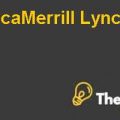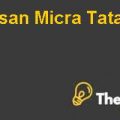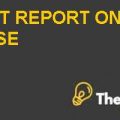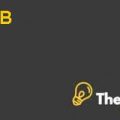Danaka Corporation: Healthcare Solutions Portfolio Management Case Study Solution
2012 Revenue Goals & Funding Allocations for New Projects
After performing the evaluation and updating of the scorecard based upon the market prospects, we performed the portfolio optimization based on the weighted scores. A screening model has been generated in excel spreadsheet with all the required quantitative criteria. Before the optimization of all the projects, we have also computed the market uncertainty and capability uncertainty of all the current 32 projects of Danaka Corporation.
All those projects, which would have lowest weighted ratings as discussed in the previous sections, would also have the highest market uncertainty and capability uncertainty. The average market uncertainty and capability uncertainties have also been computed for these three project sub-categories. It could be seen in the screening model that the Accelerated Growth projects have the lowest market uncertainty and capability uncertainty on average as compared to the other two sub categories. Capability uncertainty is the capability of the organization to fund the project. On the other hand, the market uncertainty is the evaluation of the external market environment for assessing the impact of the output of the products or in simple words it shows the revenue potential of different businesses.
There is no specific formula for computing these two measures but we have calculated them logically in the excel spreadsheet and operationalized both of these measures. Since, we do not have the data for the new projects,therefore, we have not calculated these measures for new projects. Capability uncertainty has been computed in excel spreadsheet by dividing the project’s Net Present Value with the 2007 project finding allocations to estimate the ability of the organization to generate wealth for its shareholders for each dollar of R&D spent. Similarly, the market uncertainty has been computed by dividing the revenue generated by each project in 2007 with its 2007 funding allocation to determine the revenue potential of each of the 32 projects.
All those projects, which have higher ratios, show that those projects are underperforming in the market and those projects have lower weighted scores amongst all the other projects. This proves that all those projects, which have high weighted scores, tend to have lower market uncertainty and capability uncertainty. It is also recommended to stop funding all the lagging projects due to their low cash generation potential.
All those projects, which have been screened to have their fund seliminated, have been highlighted as “Do Not Fund” projects in the screening model. The sum of the R&D expenditure of all those projects, which would not be funded, is greater than $ 300 million and we now have $ 327.1 million to fund the new projects. Apart from this, we have also summed up the revenues of all the other current funded projects and they meet the revenue constraint, as they would generate a total revenue of $ 5.204 billion by the end of the year 2012. All the computations could be seen in the excel spreadsheet screening model.
| 2012 TARGETS ACHIEVED | |
| $ 5 B Revenue Target | 5,020.4 |
| Total R&D Dollars Saved | 327.1 |
Evaluation of Opportunity Map
Finally, we have evaluated the opportunity map to analyze that whether the mix of the projects and the spreading of the funds across all the new and old projects combined, represent a reasonable mix of revenues from the venture launches, options, extend and the defend projects of Danaka Corporation. First, we see that we have three options for the projects and each of these three projects have medium capability certainty and high market certainty therefore, these need to be funded. Not all the three defensive lagging projects should be funded because they do not contribute significantly to the revenue growth of the company. Lastly, one defend and extend project will not be funded from the fight the fade and share growth projects. This is an optimal decision and it represents an optimal mix of the projects as this combination would yield minimum revenue of $ 5 billion by the end of 2012. Therefore, the funds would now be available for the eight new projects to meet the 5-year growth plans of Danaka Corporation.
Recommendations
The management team of Danaka Corporation and Gloria Manning are recommended to immediately stop the funding of the D-Equine Antiseptic spray, Drapes, collaborative care, image acquisition and image collaboration and reporting, soft goods, bandages and tapes. This is going to free up funds equal to $ 327.1 million for the new planned projects of the company. Moreover, the 2012 revenue objectives would also be achieved as the current projects would be generating revenues of $ 5.02 billion by the end of 2012. The screening model shows that the budget allocations will not have to be increased now as management will have enough funds to invest in the new projects. If this optimization is implemented by the management team then the Healthcare solutions business would be worth $ 8.5 billion by the end of the year 2012 and the company would be able to yield $ 5 billion revenue from existing projects, $2.4 billion additional revenue from eight new projects after 2012 and $ 2 million from potential acquisitions. All of this could now be funded from the available funds of $ 327.1 million............
This is just a sample partical work. Please place the order on the website to get your own originally done case solution.











